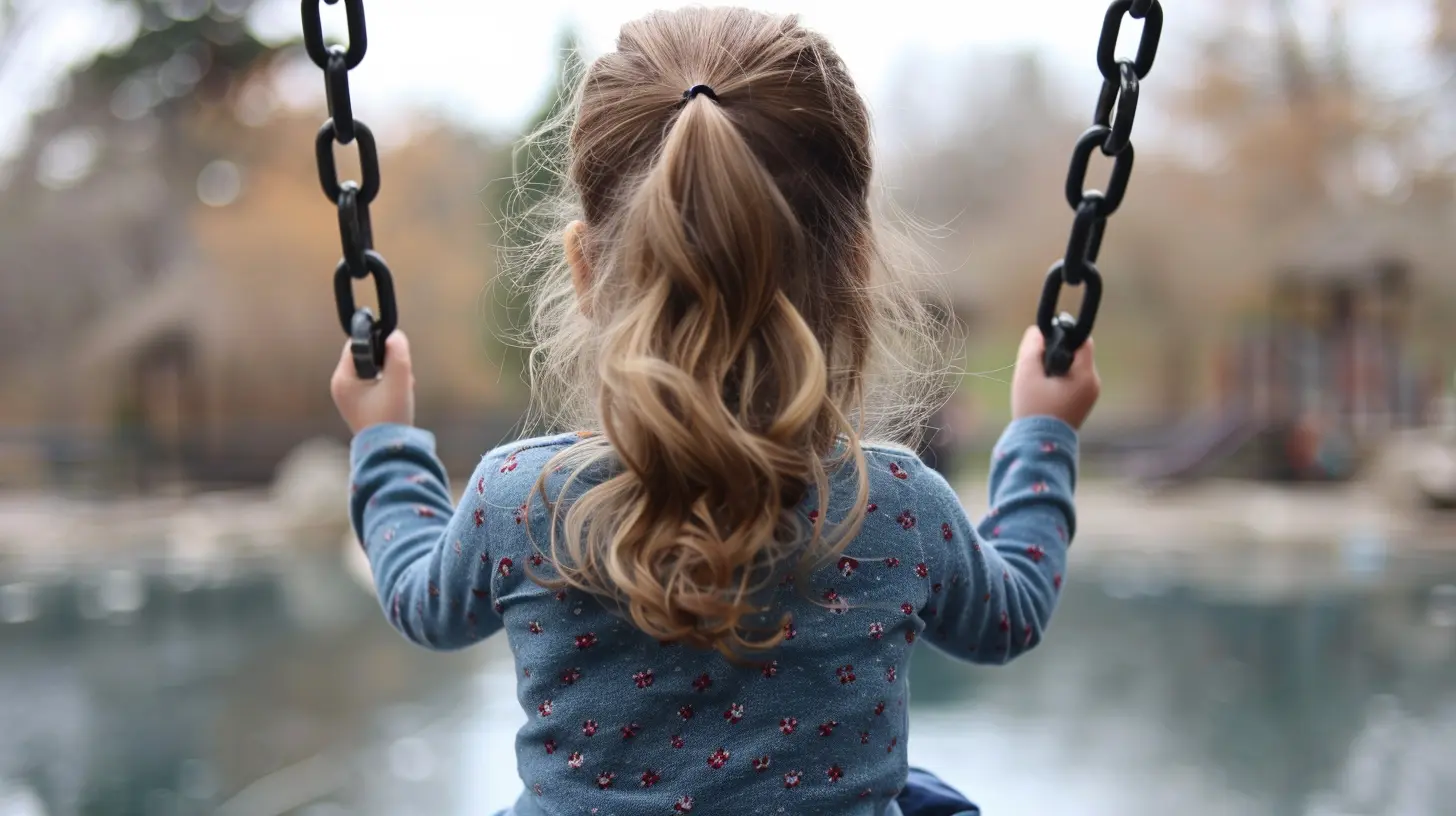Helicopter Parenting: Why Letting Go Is Hard but Necessary
28 October 2025
Let’s face it—parenting in today’s fast-paced, high-pressure world can feel like walking a tightrope while juggling 17 things at once. And when your natural instinct is to protect your child at all costs, it’s easy to fall into the “helicopter parent” trap. You know the one—hovering, swooping in to fix every problem, and constantly scanning for signs of distress like a parental air traffic controller.
It comes from a good place. We all want the best for our kids. But here’s the thing: too much hovering can actually do more harm than good.
In this article, we’re diving deep into helicopter parenting—not to judge, but to understand it, unpack it, and talk about why letting go (even just a little) is one of the hardest yet most important steps we can take as parents.
What Exactly is Helicopter Parenting?
Imagine a helicopter hovering over a field. It’s loud, ever-present, and kind of distracting, right? That’s basically what helicopter parents do—hover over their kids' lives, managing every detail, quick to intervene at the slightest hiccup.These parents aren't lazy. In fact, they’re ultra-involved, often with the best intentions. But this intense involvement can create a bubble that prevents kids from learning how to navigate life’s bumps and bruises on their own.
Common Signs of Helicopter Parenting
If you’re wondering whether you might be a helicopter parent, here are a few telltale signs:- You do your child's homework (because you want it done "right").
- You manage all of their schoolwork, schedules, and social life.
- You often solve problems for them rather than helping them solve problems.
- You monitor their every move — apps, friends, activities, etc.
- You’re quick to call the teacher, coach, or even another parent when something goes wrong.
If that sounds familiar, don’t worry—you’re not alone. So many of us fall into these behaviors because, well, we care!
Why Do Parents Hover?
Let’s not shame parents here. There are actually real reasons why we hover. Let's break them down:1. Fear of Failure
We live in a world where success seems like a race. From early reading to getting into the “right” preschool or college, we feel like one misstep could ruin our kid’s future. So we try to control as much as we can.2. Social Pressure
Have you ever felt the weight of other parents’ judgmental eyes? Or scrolled through social media and seen someone else’s kid winning awards and speaking three languages by age six? It's easy to believe you’re not doing enough unless you’re managing every little thing.3. Genuine Love and Concern
At the core, it’s love. We can’t bear to see our children hurt, fail, or struggle. So we shield them—even when that shielding might be unintentionally holding them back.
The Downside of Hovering
Here’s where things get real. While we think we're helping, research—and frankly, a healthy dose of common sense—shows that helicopter parenting can backfire.1. Struggling with Independence
When kids never get the chance to solve problems, make decisions, or even mess up a little, they don’t learn independence. They become dependent on you for everything. And that’s a problem when they eventually enter the “real world.”2. Anxiety Levels Can Skyrocket
Kids raised in helicopter households often face higher levels of anxiety. Why? Because they’ve been trained to think that anything less than perfect is dangerous, or they constantly worry about disappointing their parents.3. Low Resilience and Coping Skills
Life throws curveballs. But if your child has never had to deal with frustration, rejection, or failure on their own, small setbacks can feel like the end of the world.4. Poor Decision-Making
Making decisions (and learning from bad ones) is a critical part of growing up. If parents always make choices for their kids, those kids may struggle to make healthy decisions later in life.
Why Letting Go Is So Hard
Okay. So we know hovering has its downsides. But pulling back? That’s a whole new kind of scary.You Still Want to Protect Them
It’s instinctual. Watching your child struggle—even a little—can feel like a punch to the gut. Whether it's a scraped knee or a college rejection letter, your first thought is often: “How do I fix this?”You’re Afraid They’ll Fail
What if you let go and they make a bad choice? What if they fall behind? These are normal fears. But we have to remind ourselves that failure is often the best teacher.You Feel Guilty
Maybe you’ve created a pattern of intense involvement and now feel guilty when stepping back. Totally understandable—but necessary. Growth often means discomfort—for you and them.How to Start Letting Go (Without Losing Your Mind)
Now for the million-dollar question: how do you start giving your kid space without feeling like a bad parent?1. Start Small
Let your child choose what they want for breakfast. Let them talk to the cashier at the store. Let them pack their own backpack. These may sound like tiny steps, but they build confidence and independence.2. Encourage Problem Solving
Next time your child faces a problem, resist the urge to jump in. Instead, ask questions like:- “What do you think you should do?”
- “How would you handle that?”
Give them the tools, not the answer.
3. Let Natural Consequences Happen
Did they forget their homework? Don’t drive it to school. Did they stay up too late and feel tired the next day? Let that be a learning moment. Letting natural consequences happen teaches accountability in the real world.4. Set Boundaries, Not Controls
Your job isn’t to control—it’s to guide. Set boundaries, but give them freedom within those limits. Think of yourself like the bumpers in a bowling alley: you’re there to keep them out of the gutter, not to throw the ball for them.5. Talk About Your Own Mistakes
Let your kids hear about the time you messed up and what you learned. This normalizes failure and shows them that falling down is part of growing up.When Letting Go Feels Like Losing Control
Letting go doesn’t mean being uninvolved. It just means shifting your role from micromanager to mentor.Think of it like teaching a kid to ride a bike. At first, you’re holding on tight, maybe even running alongside them. But with time, you loosen your grip. Eventually, you let go. They may wobble. They may fall. But they get back up. And when they finally ride off on their own? That’s when you know you’ve done your job.
What Balanced Parenting Looks Like
Now let’s be clear—letting go doesn’t mean handing your kid the car keys and saying “Good luck out there.” It’s about finding a healthy balance between support and independence.Authoritative, Not Authoritarian
Experts often point to authoritative parenting as the sweet spot. That means setting clear expectations, being warm and supportive, but also giving your child the freedom to develop autonomy.Be Present, Not Overbearing
Be interested in their lives without running them. Talk with your kids, not at them. Encourage open communication, but respect their space.Trust the Process
Growth takes time. There will be bumps, falls, and maybe even setbacks. But that’s how resilience is built. Trust your child. And trust yourself. You've laid the foundation—now let them build the rest.Final Thoughts: You’re Doing Better Than You Think
If you’ve read this far, it means you care. A lot. And that’s the most important ingredient in raising healthy, confident, capable kids.Helicopter parenting doesn’t make you a bad parent. It makes you a human parent doing the best you can in a world full of uncertainty. But part of that “best” means learning to step back sometimes and letting your child step up.
Yes, it’s hard.
Yes, it’s scary.
But it's also the greatest gift you can give them—the chance to grow into the person they are meant to be.
Remember: You're not raising a child. You're raising a future adult.
all images in this post were generated using AI tools
Category:
Parenting MistakesAuthor:

Austin Wilcox
Discussion
rate this article
1 comments
Chase Patterson
Ah, helicopter parenting—the only sport where parents train hard but never get to score! Letting go is like watching your kid try to ride a bike for the first time: thrilling and terrifying. But hey, if they fall, at least we get some great blooper footage for later!
November 2, 2025 at 3:39 AM

Austin Wilcox
Absolutely! Letting go is challenging, but those moments of independence lead to growth—and some memorable bloopers along the way!


